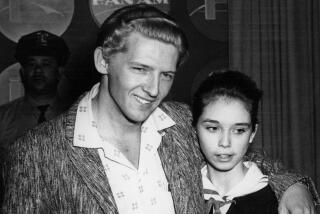Props for a country pioneer
The name Charlie Poole could cause even a lot of country music aficionados to plead ignorance, yet he’s described as “the patron saint” of the genre in liner notes for the new three-CD box set “You Ain’t Talkin’ to Me: Charlie Poole and the Roots of Country Music” (Legacy Recordings, www.legacyrecordings.com).
The emphasis with this retrospective, however, is not to minimize the role of such long-acknowledged pioneers as Jimmie Rodgers or the Carter Family but to give an under-sung hero his moment in the spotlight.
What’s indisputable is that Poole, born March 22, 1892, in Randolph County, N.C., recorded and had hits well before Rodgers or the Carters were discovered in 1927. His “Don’t Let Your Deal Go Down Blues” sold more than 100,000 copies, says producer-historian Henry Sapoznik, when there were only around 600,000 households in the South with record players.
It’s also clear from these 82 sides that Poole, a banjo player and singer, could be deeply affecting as well as unapologetically corny, bringing songs out of vaudeville and even earlier into his act with his original partners in the North Carolina Ramblers, guitarist Noman Woodlief and fiddler Posey Rorer.
Yet even today, country rarely gets more poignant than “Husband and Wife Were Angry One Night,” about a girl’s reaction to her parents’ impending split.
“The Letter That Never Came,” a 1927 recording in which the singer yearns unsuccessfully for some word from the woman he loves, lyrically is an ancestor to the Motown hit “Please Mr. Postman” and melodically to Woody Guthrie’s “Union Maid.”
Poole often relies on the kind of blues-singer inflections and bent notes that would characterize Rodgers’ seminal synthesis of black and white styles.
“If it hadn’t been for his early success, Victor [the Victor Talking Machine Co., later RCA Victor] would not have sent a recording team down to Bristol [Tenn.] in 1927,” Sapoznik said from his home in New York, referring to the sessions that resulted in the discovery within the same week of both Rodgers and the Carters by RCA record executive Ralph Peer. “Before that, there was no perceived market for this kind of music.”
Even more than any credit for creating a blueprint for what we now know as country music, Poole, Woodlief and Rorer laid out many of the elements that Bill Monroe would crystallize more than a decade later in a style that would become bluegrass music: high-piercing lead vocals, layered harmonies and clean, crisp instrumental interplay among banjo, fiddle and guitar, the banjo providing a nearly percussive rhythmic foundation.
In 1931, with Poole’s career in decline, he was working in a North Carolina mill when Hollywood called, looking to cast him in a western. He celebrated with an alcohol binge and died before setting foot on the West Coast.
“When I listened to all the country records of that time, people like Uncle Dave Macon, you heard a clear sound of what this music had been like in the past,” said Sapoznik, himself a banjo player and guitarist. “With Poole, I heard an aesthetic that still had currency. I heard the future. That was kind of thrilling, to realize there was no template he was following for what he did.”
More to Read
The biggest entertainment stories
Get our big stories about Hollywood, film, television, music, arts, culture and more right in your inbox as soon as they publish.
You may occasionally receive promotional content from the Los Angeles Times.






